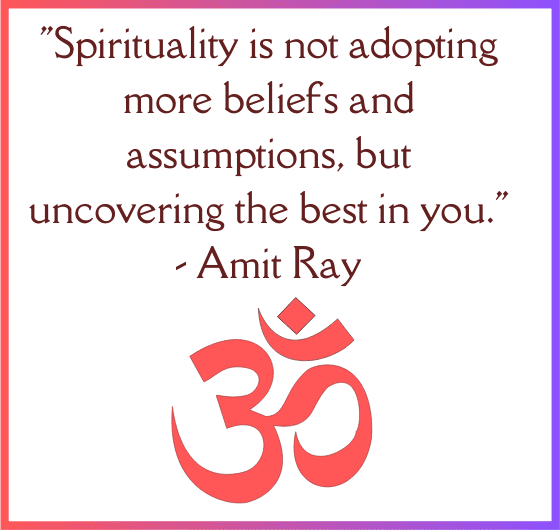Yoga has been a part of Indian culture for thousands of years and is deeply rooted in the pursuit of happiness and inner peace. Through the practice of physical postures, Breathwork, meditation, and mindfulness, yoga can help individuals cultivate a deeper sense of joy, contentment, and well-being. Its benefits extend beyond the physical body, providing a pathway to mental, emotional, and spiritual Indian happiness.
“Yoga is a powerful vehicle for change. As you build strength, you start to believe in your own potential” – Tiffany Cruikshank
** Yoga has been practiced in India for thousands of years as a means of achieving happiness and inner peace.
** The physical postures and Breathwork of yoga have been shown to increase levels of serotonin and reduce cortisol, leading to improved mood and reduced stress levels.
** Through the practice of mindfulness and meditation, yoga can help individuals cultivate a deeper sense of joy and contentment.
** The benefits of yoga extend beyond the physical body, providing a pathway to mental, emotional, and spiritual happiness.
** In India, yoga is seen as a way of life and is often used in combination with other practices like meditation, chanting, and Breathwork to promote overall well-being and happiness.

The Ancient Indian Secrets to Happiness
India has a rich cultural heritage and a plethora of ancient wisdom that can guide one toward happiness. Here are some ancient Indian secrets to happiness:
1.. Contentment – the key to happiness is to be content with what you have and not crave for more.
2. Karma – good deeds and positive actions lead to happiness and well-being.
3. Mindfulness – practicing mindfulness helps to calm the mind and bring inner peace.
4. Yoga and Meditation – the ancient practices of yoga and meditation have been shown to promote happiness and well-being.
5. Gratitude – being grateful for what you have and expressing gratitude towards others leads to a happier and more fulfilling life.
6. Community – being part of a supportive community and having strong social connections is essential for happiness.
7. Service – helping others and contributing to the greater good can bring a sense of purpose and fulfillment.
8. Self-care – taking care of oneself physically, emotionally, and spiritually is important for overall well-being.
By incorporating these ancient Indian secrets to happiness into our daily lives, we can find greater joy, fulfillment, and contentment.
“The essence of yoga is to cultivate a happy and peaceful mind.” – B.K.S. Iyenga
The science behind Indian happiness secrets
Indian culture has long been associated with happiness and contentment. From Ayurveda to Yoga, the ancient practices of India have offered insights into how we can achieve greater well-being and satisfaction in life. Here are some of the scientific explanations for why these Indian happiness secrets work:
** Yoga: The physical postures and Breathwork of yoga have been shown to reduce stress and anxiety, improve mood, and promote relaxation.
** Meditation: Meditation practices like mindfulness and transcendental meditation can alter brain activity, reducing negative thoughts and emotions and increasing positive ones.
** Ayurveda: The principles of Ayurveda emphasize balance in the body and mind, promoting physical and mental health.
** Gratitude: The practice of expressing gratitude has been linked to increased happiness and well-being, as it helps to shift our focus to the positive aspects of our lives.
Overall, the Indian happiness secrets offer a holistic approach to well-being that integrates physical, mental, and spiritual health. By incorporating these practices into our daily lives, we can tap into the science behind these ancient techniques and experience greater happiness and fulfillment.

“Embrace the Power of Gratitude: Past, Present, and Future”
Unveiling the hidden secrets to Happiness in Indian Culture
India has long been associated with spiritual and philosophical traditions that offer unique insights into the nature of happiness. Here are some of the hidden secrets to happiness that can be found in Indian culture:
1.. Gratitude: Indian culture emphasizes the importance of being grateful for what you have and recognizing the abundance in your life.
2. Mindfulness: Practices such as meditation and yoga help cultivate present-moment awareness, which can lead to a greater sense of inner peace and contentment.
3. Connection: Indian Cultural values the importance of family, community, and social connections, which can provide a sense of belonging and support.
4. Self-awareness: Through practices such as self-inquiry and self-reflection, Indian philosophy encourages individuals to explore their inner world and develop a deeper understanding of themselves.
5. Service: Giving back to others and engaging in acts of kindness can promote a sense of purpose and fulfillment.
Moreover, by embracing these and other principles, we can tap into the wisdom of Indian culture and discover the secrets to a happier, more fulfilling life.
“In Indian philosophy, the purpose of life is not just to be happy. It is to be useful, to be honorable, to be compassionate, to have it make some difference that you have lived and lived well.” – Ralph Waldo Emerson
The Key to lasting happiness: Indian Wisdom and Practices
Indian wisdom and practices have long been associated with the pursuit of happiness. Here are some key insights on how to achieve lasting happiness through ancient Indian wisdom and practices:
** Cultivate a sense of gratitude: Gratitude is a powerful practice that can help you feel happier and more content. Take some time each day to reflect on the things you are thankful for.
** Embrace mindfulness: Mindfulness is the practice of being present in the moment, and it can help you feel more relaxed and focused. Incorporate mindfulness practices like meditation and pranayama into your daily routine.
** Stay connected: Connection with loved ones is essential for happiness. Make time to connect with family and friends on a regular basis.
** Live in balance: Balance is key to happiness. Practice yoga and eat a healthy, balanced diet to maintain physical and emotional balance.
By incorporating this ancient Indian wisdom and practices into your life, you can cultivate a lasting sense of happiness and well-being.

The Power of Gratitude and Contentment in Indian happiness secrets
The concept of gratitude and contentment has always been an integral part of Indian culture and tradition. It is a well-known fact that these two emotions play a crucial role in one’s happiness and well-being. Let’s take a look at how gratitude and contentment are a part of the Indian happiness secrets:
** Gratitude is known as “Kritajnata” in Sanskrit, which means “one who remembers favors.” It is a way of expressing thankfulness and appreciation for the good things in life.
** Contentment, or “Santosh,” is the state of being satisfied with what one has and not seeking more or craving for material possessions.
** Indian scriptures and teachings emphasize the importance of practicing gratitude and contentment in daily life. It is believed that cultivating these emotions can lead to inner peace and happiness.
** Practices such as yoga, meditation, and mindfulness are often used to help individuals develop gratitude and contentment.
** Indian festivals like Diwali and Pongal are centered around the concept of gratitude and giving thanks.
Moreover, incorporating gratitude and contentment into one’s daily routine can lead to a happier and more fulfilling life. These Indian happiness secrets are worth exploring and embracing for a more positive outlook on life.
“Gratitude is not only the greatest of virtues, but the parent of all others.” – Marcus Tullius Cicero
The Art of Living: Indian happiness secrets to a fulfilling life
India has a rich cultural heritage that is deeply rooted in spiritual practices and beliefs. For centuries, Indian wisdom has offered insights into how to live a fulfilling life. Here are some of the Indian happiness secrets that can help you achieve a life of contentment and fulfillment:
** Embrace simplicity: In a world that is increasingly complex and cluttered, simplicity can be a powerful antidote. Embracing a simpler way of life can help reduce stress and promote contentment.
** Practice gratitude: Being grateful for what you have can help you find happiness and fulfillment. Take time every day to express gratitude for the blessings in your life.
** Cultivate compassion: Compassion is the ability to empathize with others and respond to their suffering with kindness. Practicing compassion can help you build stronger relationships and feel more connected to others.
** Live in the present: The past is gone, and the future is uncertain. The only moment that truly matters is the present. By living in the moment, you can find greater joy and contentment.
** Connect with nature: Spending time in nature can be a powerful way to recharge your batteries and find inner peace. Make time to connect with the natural world around you.
By incorporating these Indian happiness secrets into your life, you can create a more fulfilling and contented existence.
“Gratitude makes sense of our past, brings peace for today, and creates a vision for tomorrow.” – Melody Beattie

The Role of Spirituality in Indian happiness secrets
“Spirituality is not adopting more beliefs and assumptions, but uncovering the best in you.” – Amit Ray
India is a land of spirituality, and it’s no surprise that spirituality plays a significant role in Indian happiness secrets. Here are some ways in which spirituality contributes to happiness in Indian culture:
** Spiritual practices, such as meditation and yoga, are believed to promote inner peace and well-being, leading to greater happiness.
** The concept of karma, or the idea that our actions have consequences, encourages individuals to act in ways that promote good and avoid harm to others, leading to a sense of fulfillment and contentment.
** Many Indians believe in the power of prayer and devotional practices to connect with a higher power and find meaning in life.
** Spiritual leaders and gurus are highly respected in Indian culture, and their teachings and guidance can help individuals find purpose and happiness in life.
Overall, spirituality is seen as a way to connect with something greater than oneself and find a sense of purpose and fulfillment, contributing to the overall happiness of individuals in Indian culture.
The Connection between Food and Happiness in Indian Culture
Food is an integral part of Indian culture and has been linked to happiness for centuries. The connection between food and happiness in Indian culture is based on the idea of nourishing the body and mind with natural, wholesome food. Here are some key points:
** Indian cuisine is known for its use of fresh, aromatic spices and herbs, which not only add flavor but also provide numerous health benefits.
** The concept of Ayurveda, an ancient system of medicine, emphasizes the importance of eating according to one’s body type and seasonal changes, leading to overall physical and mental wellness.
** Traditional Indian meals include a variety of dishes with different flavors, textures, and colors, creating a multi-sensory experience that enhances mood and pleasure.
** Festivals and celebrations in India are often centered around food, emphasizing the social and cultural significance of communal eating and sharing.
** The practice of offering food to Deities and then consuming it as Prasad (blessed food) is believed to infuse positive energy and happiness into the food.
** In recent times, the trend of conscious eating, such as vegetarianism and Veganism, has gained popularity in India, highlighting the connection between food choices and overall well-being.
In conclusion, the connection between food and happiness in Indian culture goes beyond just satisfying hunger and taste buds; it is about nourishing the body, mind, and spirit.
“Indian cuisine is an art that has been passed down from one generation to another, and each generation adds its own unique touch to it.” – Madhur Jaffrey
The Significance of Family and Community in Indian happiness secrets
India is a country where family and community are deeply ingrained in the culture, and this is reflected in the happiness of its people. The support and care that family and community providers are essential for happiness, and Indian culture has many practices that emphasize these connections.
Here are some ways in which family and community play a role in Indian happiness secrets:
** Joint families: Living with extended family members is a common practice in India, providing a strong support system for individuals.
** Festivals and celebrations: Indian festivals are often community events, bringing people together and fostering a sense of belonging.
** Volunteer work: Giving back to the community through volunteer work is a widespread practice, creating a sense of purpose and fulfillment.
** Spiritual communities: Many Indians find a sense of belonging and support in religious or spiritual communities.
Therefore, these practices encourage social connections and a sense of belonging, which are essential for happiness. By prioritizing the well-being of the community and the family, Indian culture creates a supportive environment that fosters happiness and contentment.

How to apply Indian happiness secrets to modern life
Indian culture is renowned for its ancient wisdom on happiness and well-being. While many of these secrets have been passed down for generations, it can be difficult to apply them to our modern, fast-paced lives. Here are some tips on how to incorporate Indian happiness secrets into your daily routine:
1.. Practice gratitude: Start each day with a few minutes of reflection on what you’re grateful for.
2. Meditate: Even just a few minutes of daily meditation can help reduce stress and increase happiness.
3. Connect with others: Spend time with family and friends, join a community group or volunteer for a cause you believe in.
4. Eat mindfully: Pay attention to what you eat and how it makes you feel. Incorporate healthy, whole foods into your diet.
5. Practice yoga: Yoga is a powerful tool for reducing stress and promoting well-being.
6. Get enough sleep: Prioritize getting enough restful sleep each night.
7. Embrace simplicity: Simplify your life by decluttering your space, reducing your commitments, and focusing on what truly matters.
8. Prioritize self-care: Make time for activities that bring you joy and reduce stress, such as yoga, meditation or a hobby.
9. Embrace spirituality: Explore your beliefs and find ways to connect with something greater than yourself.
By incorporating these practices into your daily routine, you can experience the benefits of Indian happiness secrets in your modern life.
Moreover, Indian culture has a long tradition of valuing happiness and contentment, and its wisdom can still be applied to modern life. To cultivate happiness, one can practice gratitude and contentment, as well as engage in spiritual practices such as meditation and yoga. It’s also important to nourish oneself with healthy, nutritious foods and cultivate meaningful relationships with family and community. By prioritizing these values and practices, one can bring the secrets of Indian happiness into modern life.
“When you make peace with yourself, you make peace with the world.” – Maha Ghosananda
5 interesting facts related to Yoga and Happiness in India
1.. Yoga has been scientifically proven to increase levels of serotonin and reduce levels of cortisol, leading to improved mood and reduced stress levels.
2. The ancient practice of yoga originated in India over 5,000 years ago and has been used as a tool for achieving happiness and well-being ever since.
3. According to the World Health Organization (WHO), depression is a leading cause of disability worldwide. Yoga has been shown to be an effective complementary therapy in the treatment of depression and anxiety.
4. The practice of yoga involves mindfulness, which is a mental state characterized by awareness and acceptance of the present moment. Studies have shown that mindfulness practices like yoga can lead to greater feelings of happiness and contentment.
5. In India, yoga is not just a physical practice, but a way of life. It is often used in combination with other practices like meditation, chanting, and Breathwork to promote overall well-being and happiness.


